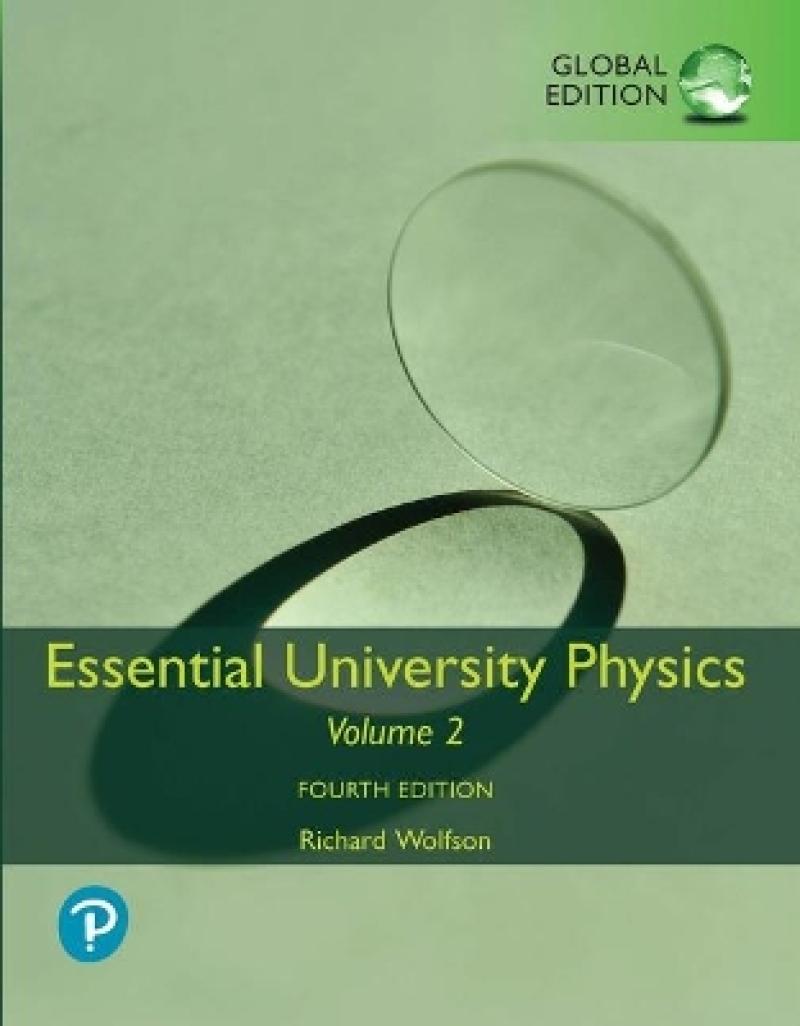Focus on the fundamentals and help students see connections between problem types
Richard Wolfson’s Essential University Physics is a concise and progressive calculus-based physics textbook that offers clear writing, great problems, and relevant real-life applications in an affordable and streamlined text. The book teaches sound problem-solving strategies and emphasises conceptual understanding, using features such as annotated figures and step-by-step problem-solving strategies. Realising students have changed a great deal over time while the fundamentals of physics have changed very little, Wolfson makes physics relevant and alive for students by sharing the latest physics applications in a succinct and captivating style.
The 4th Edition, Global Edition, incorporates research from instructors, reviewers, and thousands of students to expand the book’s problem sets and consistent problem-solving strategy. A new problem type guides students to see patterns, make connections between problems that can be solved using similar steps, and apply those steps when working problems on homework and exams.
Volume 2 contains Chapters 20-39
Available for separate purchase is Volume 1 containing Chapters 1-19
Available for separate purchase is Volume 1 containing Chapters 1-19
- 20 Electric Charge, Force, and Field
- 21 Gauss’s Law
- 22 Electric Potential
- 23 Electrostatic Energy and Capacitors
- 24 Electric Current
- 25 Electric Circuits
- 26 Magnetism: Force and Field
- 27 Electromagnetic Induction
- 28 Alternating-current Circuits
- 29 Maxwell’s Equations and Electromagnetic Waves
- 30 Reflection and Refraction
- 31 Images and Optical Instruments
- 32 Interference and Diffraction
- 33 Relativity
- 34 Particles and Waves
- 35 Quantum Mechanics
- 36 Atomic Physics
- 37 Molecules and Solids
- 38 Nuclear Physics
- 39 From Quarks to the Cosmos
Download the detailed table of contents
- Every worked example uses the IDEA (Interpret, Develop, Evaluate, and Assess) framework which begins with a problem's key ideas, stresses the importance of planning a solution and drawing a diagram, works through the math, checks for reasonable answers, and relates the problem's content to a broader understanding of physics.
- Problem-Solving Strategy boxes follow the IDEA framework and provide detailed guidance for specific classes of physics problems.
- Tactics boxes reinforce specific essential skills such as differentiation, setting up integrals, vector products, drawing free-body diagrams, simplifying series and parallel circuits, or ray tracing.
- Tips provide helpful problem-solving hints or warn against common pitfalls and misconceptions.
- Got It? boxes provide quick checks for students to test their conceptual understanding. These multiple-choice and ranking task problems are also available as clicker system questions.
- Every chapter includes Applications that explore modern examples of physics in the real world.
- Engineering applications prepare engineering students for the field.
- MCAT-style Passage Problems appear in each chapter and follow the format used in the MCAT exam. These problems require students to investigate multiple aspects of a real-life physical situation, typically biological in nature, as described in a reading passage.
- Example Variation Problems build in difficulty by changing scenarios, changing the knowns vs. unknowns, and adding complexity and a step of reasoning to provide the most helpful range of related problems that use the same basic approach to find their solutions. These scaffolded problem sets help students see patterns and make connections between problems that can be solved using similar steps and help them to be less surprised by variations on problems when exam time comes. Assignable in Mastering Physics.
- Learning Outcomes succinctly state goals for each chapter, identifying for students what they should be learning and aiding in metacognition.
- Each end-of-chapter problem is correlated with one or more learning outcomes.
- Learning Outcomes Table at the start of each end-of-chapter problem set relates problems and helps students target what they don’t know and prove what they do.
Produktdetaljer
Biografisk notat
Richard Wolfson is the Benjamin F. Wissler Professor of Physics at Middlebury College, where he has taught since 1976. He did undergraduate work at MIT and Swarthmore College, and he holds an M.S. from the University of Michigan and Ph.D. from Dartmouth. His ongoing research on the Sun's corona and climate change has taken him to sabbaticals at the National Center for Atmospheric Research in Boulder, Colorado; St. Andrews University in Scotland; and Stanford University. Rich is a committed and passionate teacher. This is reflected in his many publications for students and the general public, including the video series Einstein's Relativity and the Quantum Revolution: Modern Physics for Nonscientists, Physics in Your Life, Physics and Our Universe: How It All Works, and Understanding Modern Electronics; books Nuclear Choices: A Citizen's Guide to Nuclear Technology, Simply Einstein: Relativity Demystified, and Energy, Environment, and Climate; and articles for Scientific American and the World Book Encyclopedia.
